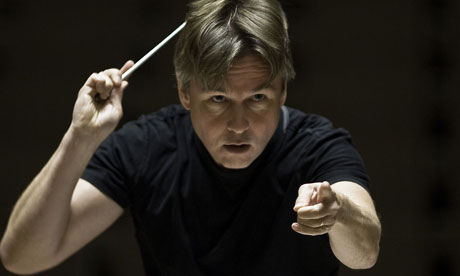
Shostakovich's unfinished opera Orango dates from 1932 and was a commission from Moscow's Bolshoi theatre to commemorate the 15th anniversary of the October Revolution. The subject concerns the genetically engineered Orango, half-man, half-ape, who becomes the embodiment of western capitalism at its most bestial, before being captured by the Soviets and put on show to the public. The manuscript was believed lost until a piano score of the prologue turned up in Moscow in 2004. Orchestrated by Gerard McBurney, it was premiered in Los Angeles last December, where this live recording was made.
The reasons for its abandonment remain unclear. Time was probably a contributory factor, but there is also the possibility of concerns about official disapproval. The work opens with the captive Orango already on show in Moscow. Threatening to go King Kong-like out of control, he's more sympathetic than we might expect given his symbolic weight, while his on-stage audience, more interested in him than in official pageantry, don't exactly come over as model Soviets.
The score, some of which reworks material from the 1931 ballet The Bolt, is full of breezy numbers in Shostakovich's most overtly popular idiom, and its trenchant wit and seriousness of satirical purpose leave you wishing more of it had survived. Esa-Pekka Salonen and the LA Philharmonic have great fun with it, and there are fine performances from Eugene Brancoveanu as Orango, Ryan McKinny as the Entertainer who shows him off, and Michael Fabiano as the dubious Zoologist who lectures about him.
Since its rediscovery, some have detected a reference to the opera in the still controversial Fourth Symphony, its companion piece here. Salonen conducts it with cool lucidity and a sense of remorseless logic. It's less overtly Mahlerian than many performances, and consequently less self-consciously tragic. The immense climax of the finale isn't as shattering as it could be, but elsewhere Salonen's fondness for clear textures is very much in evidence, and often admirable.

